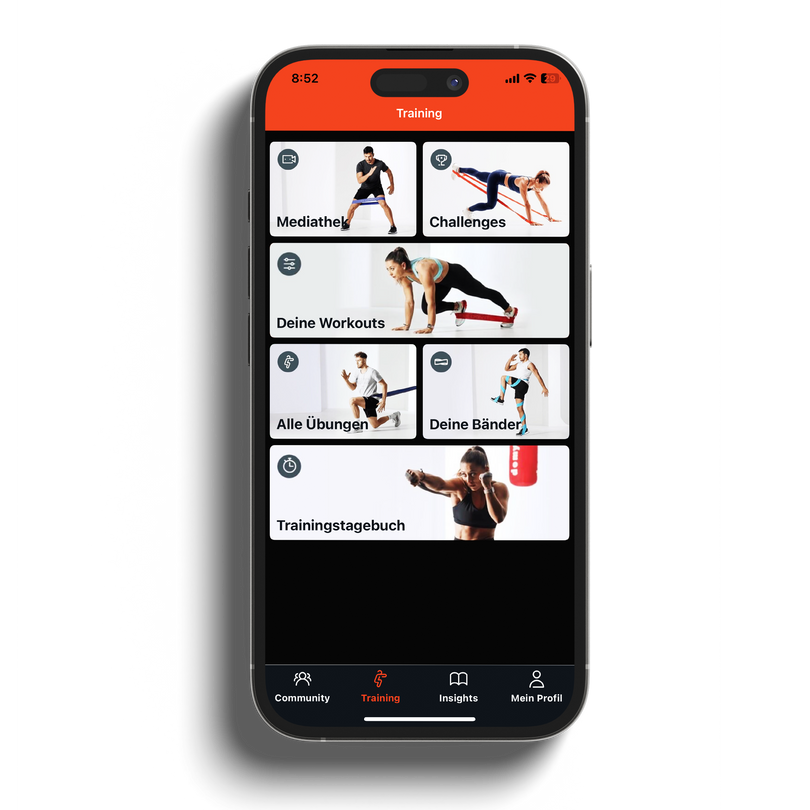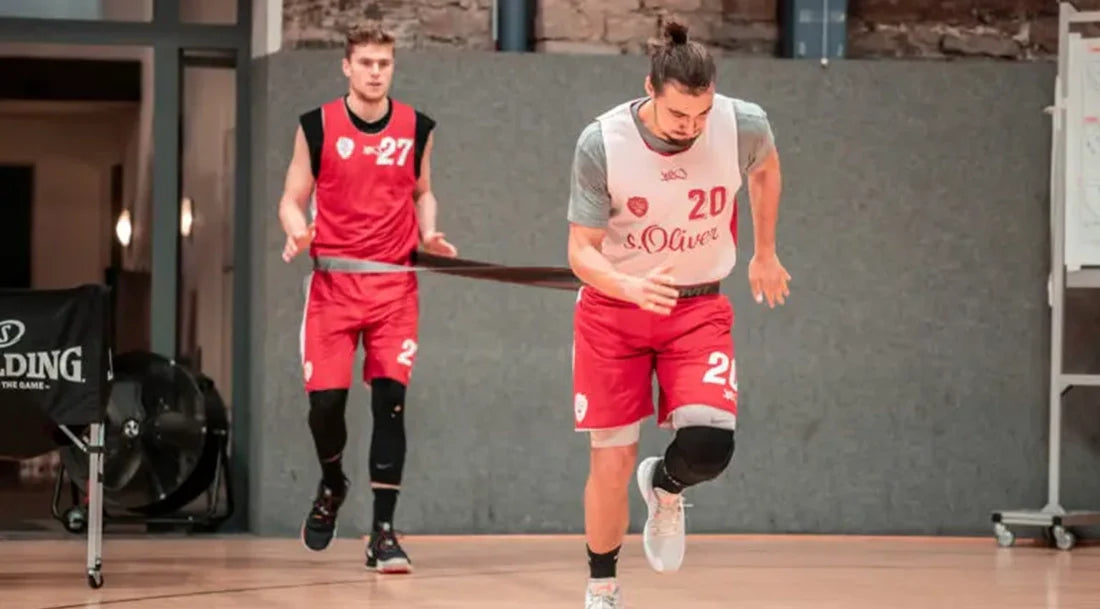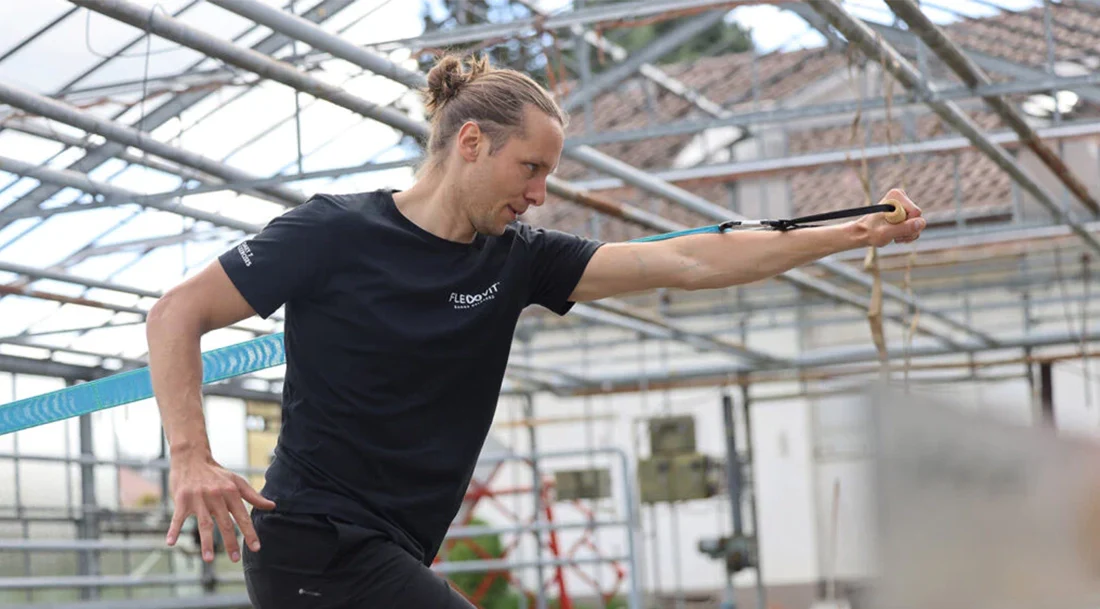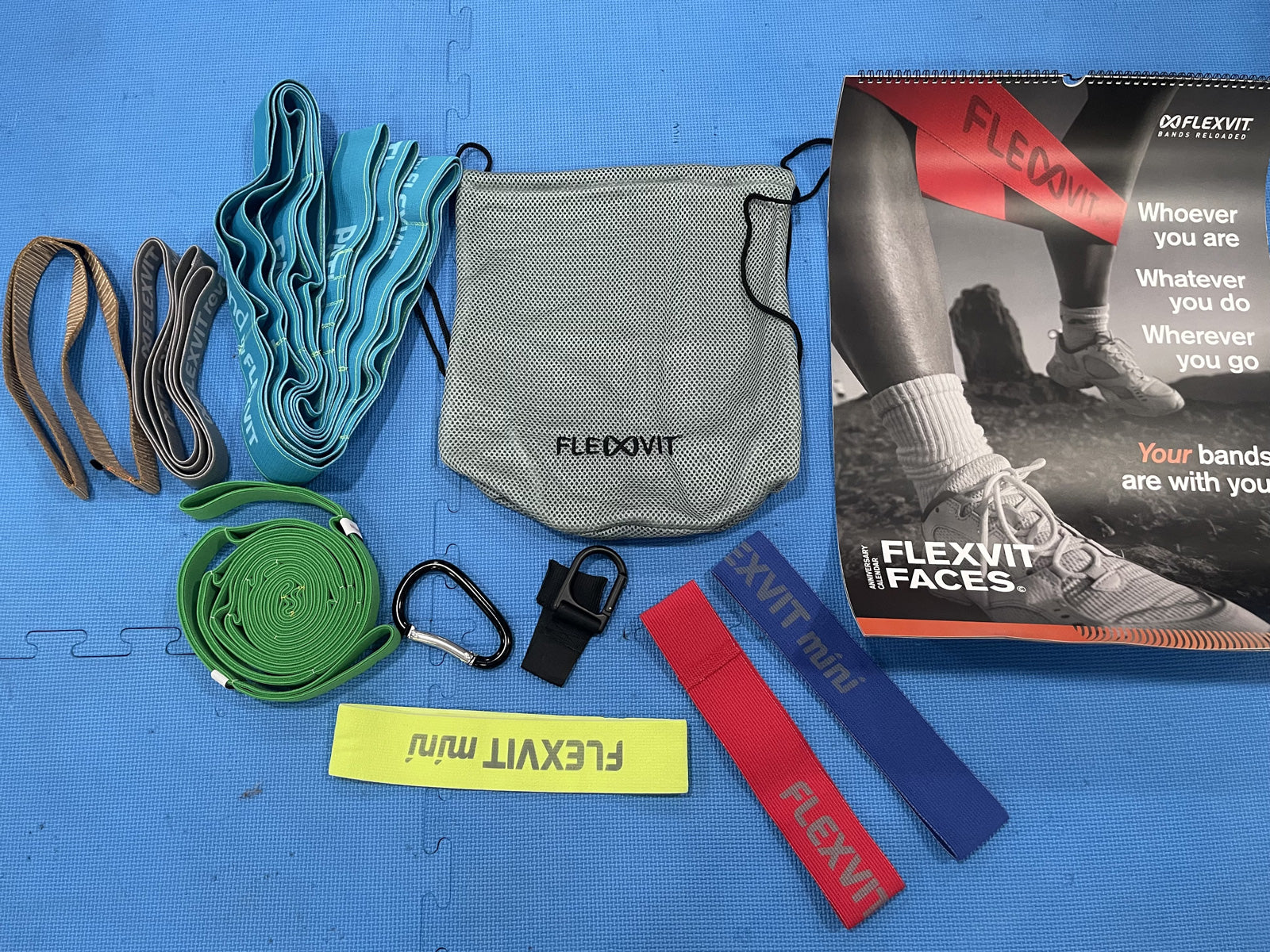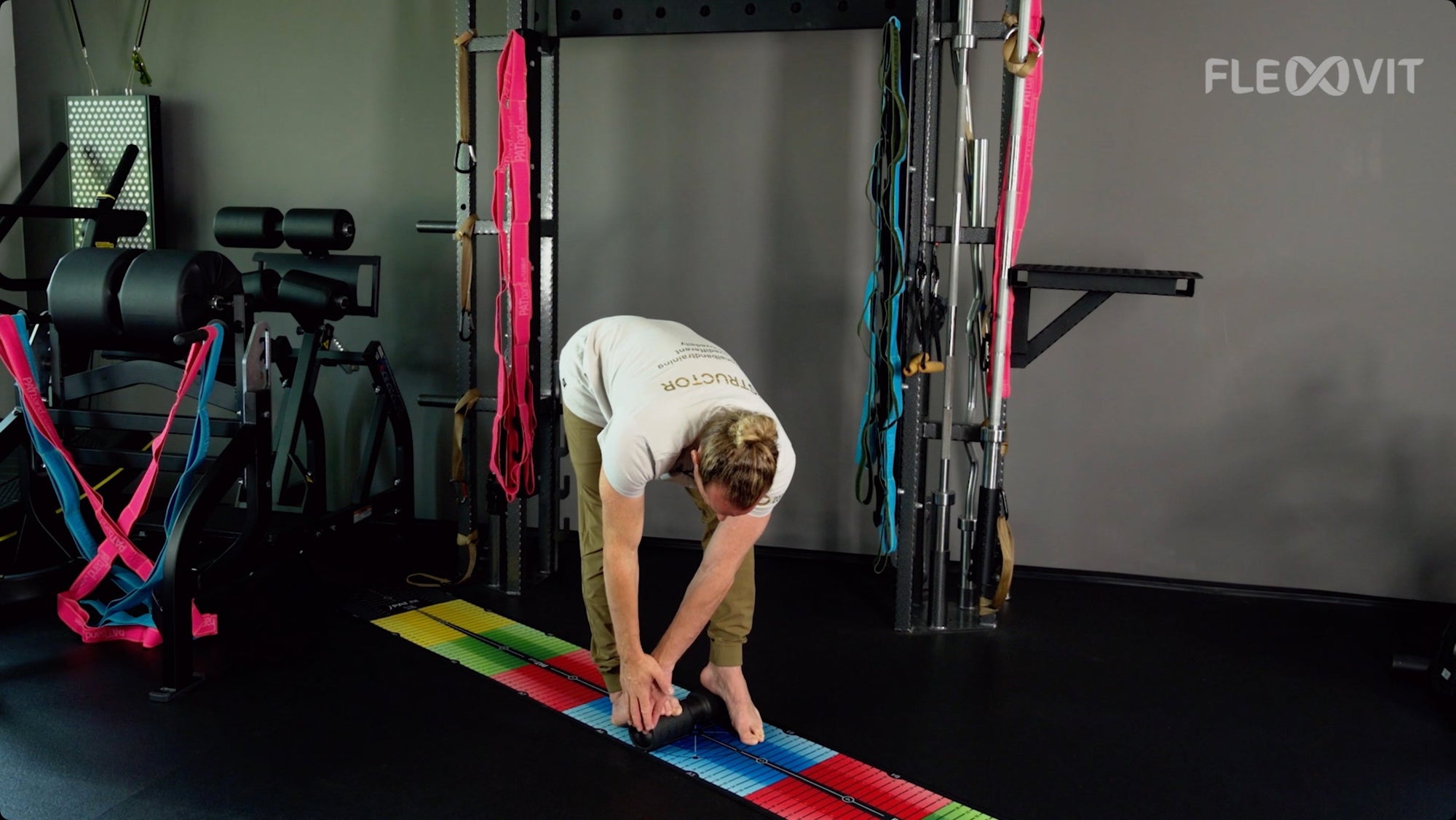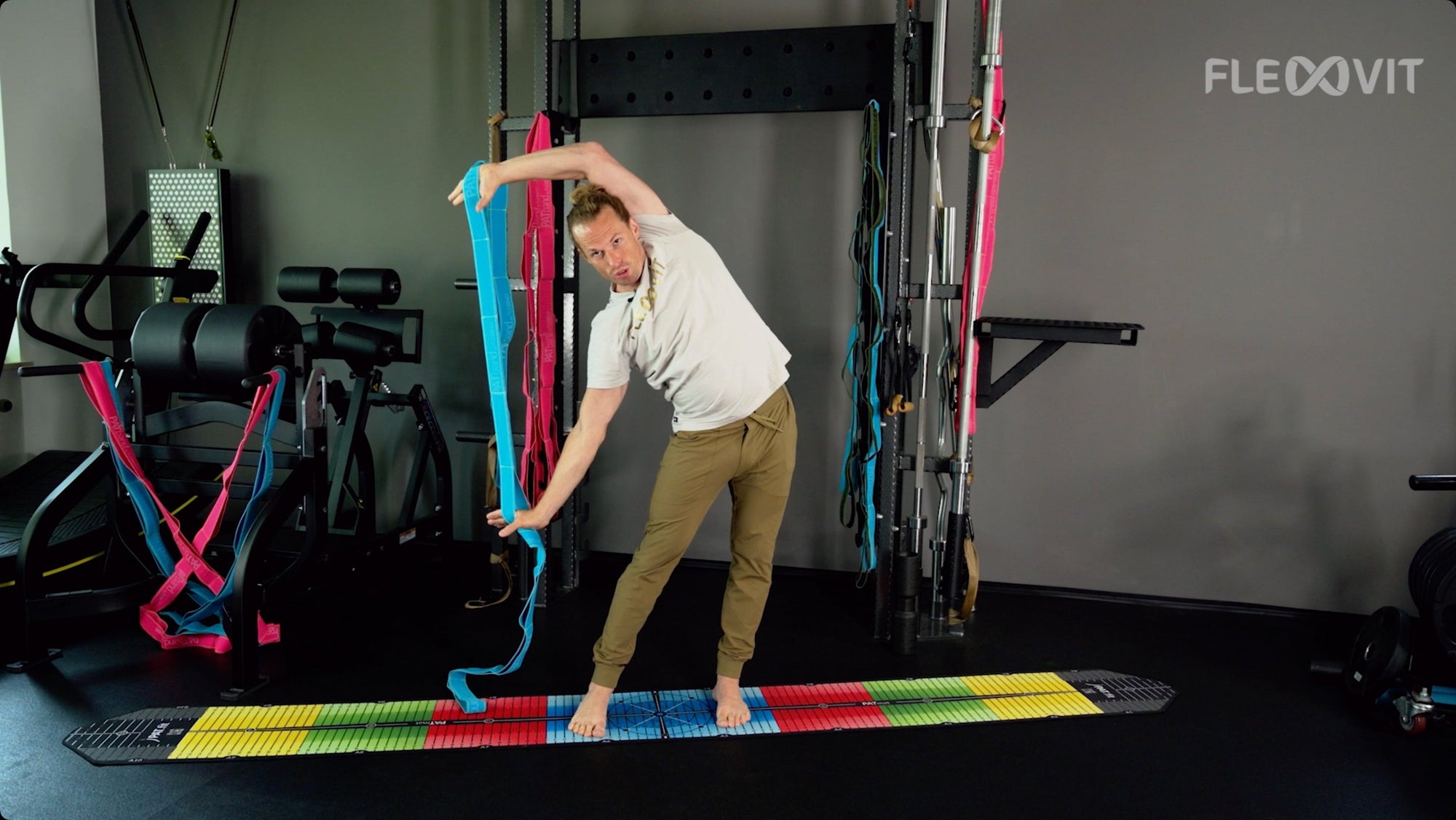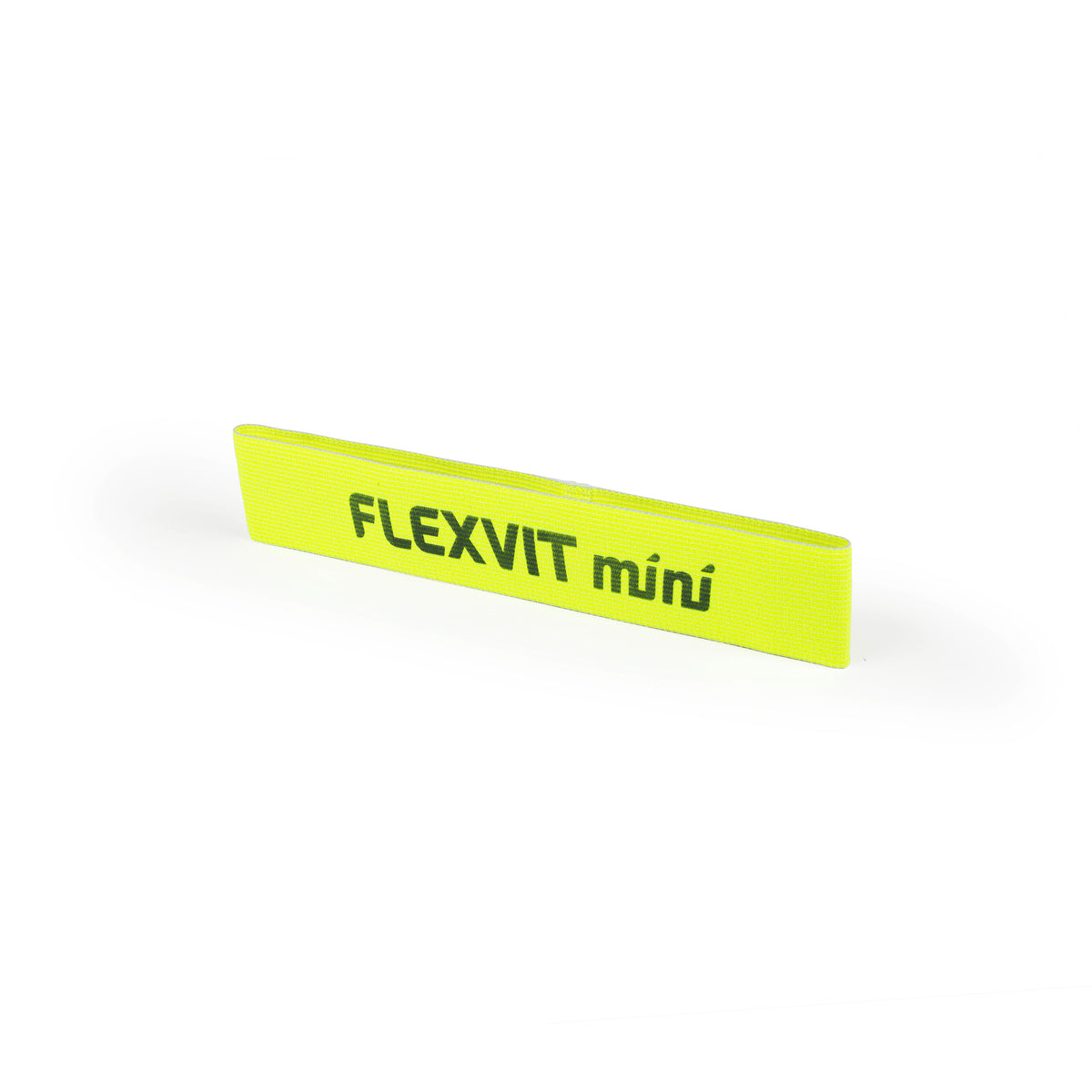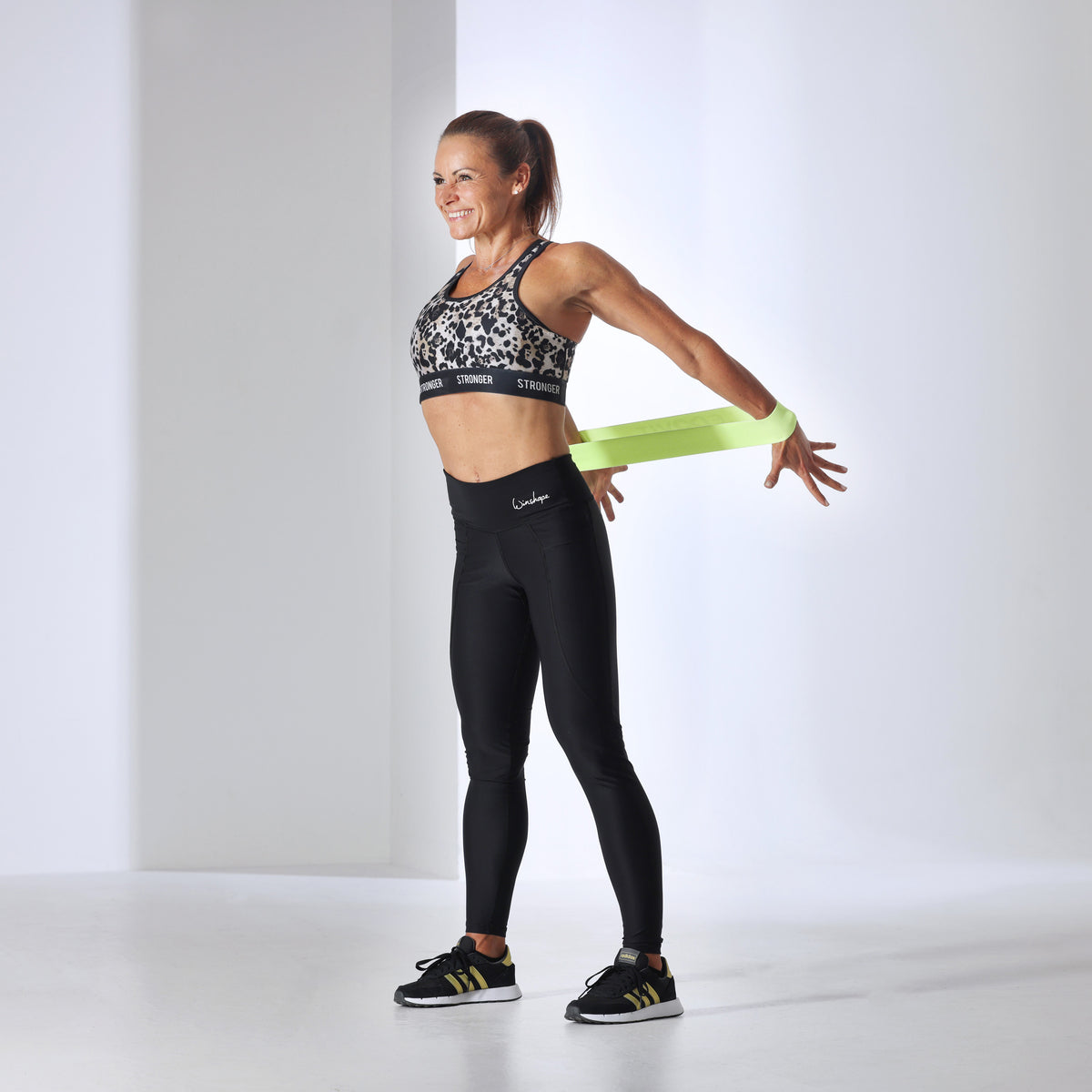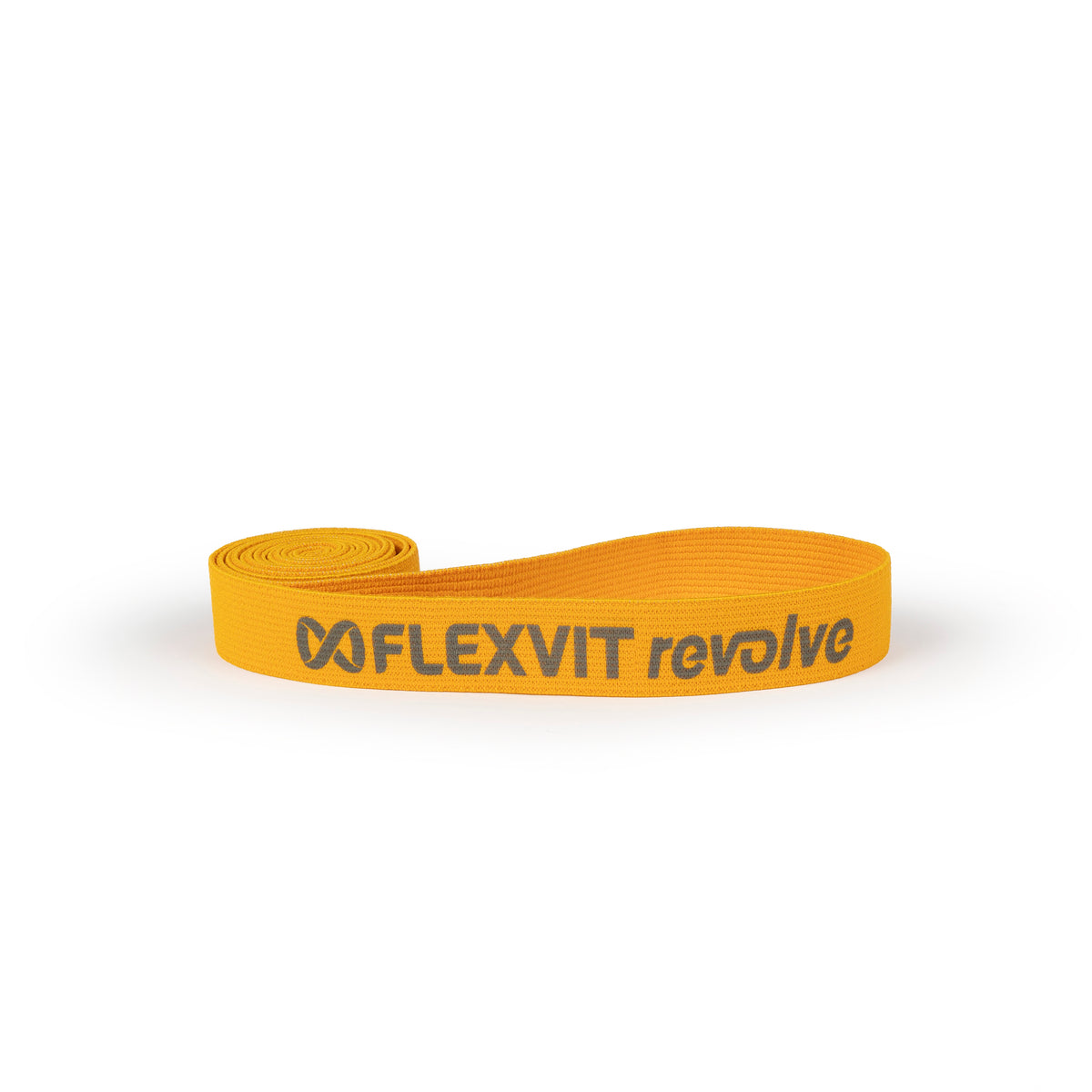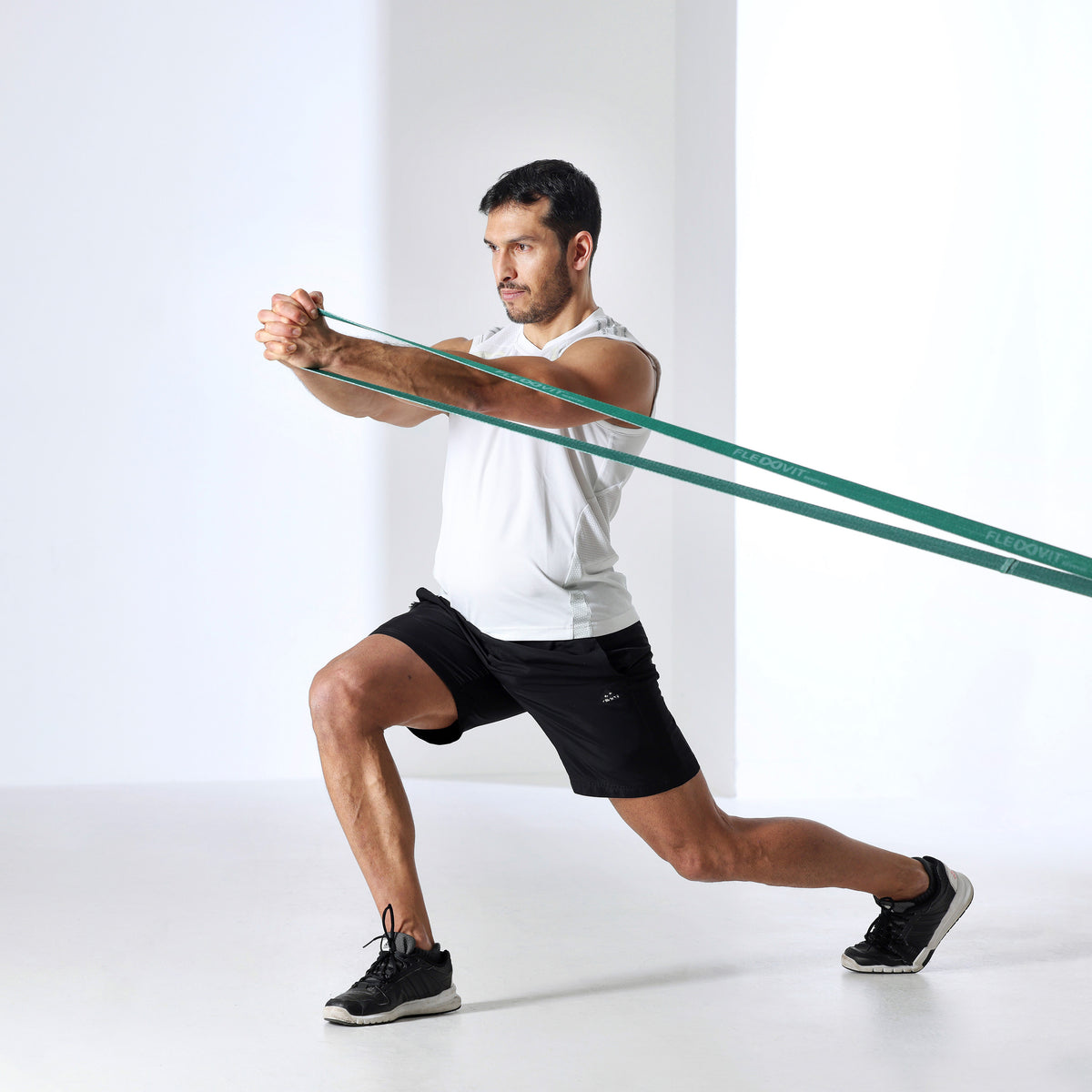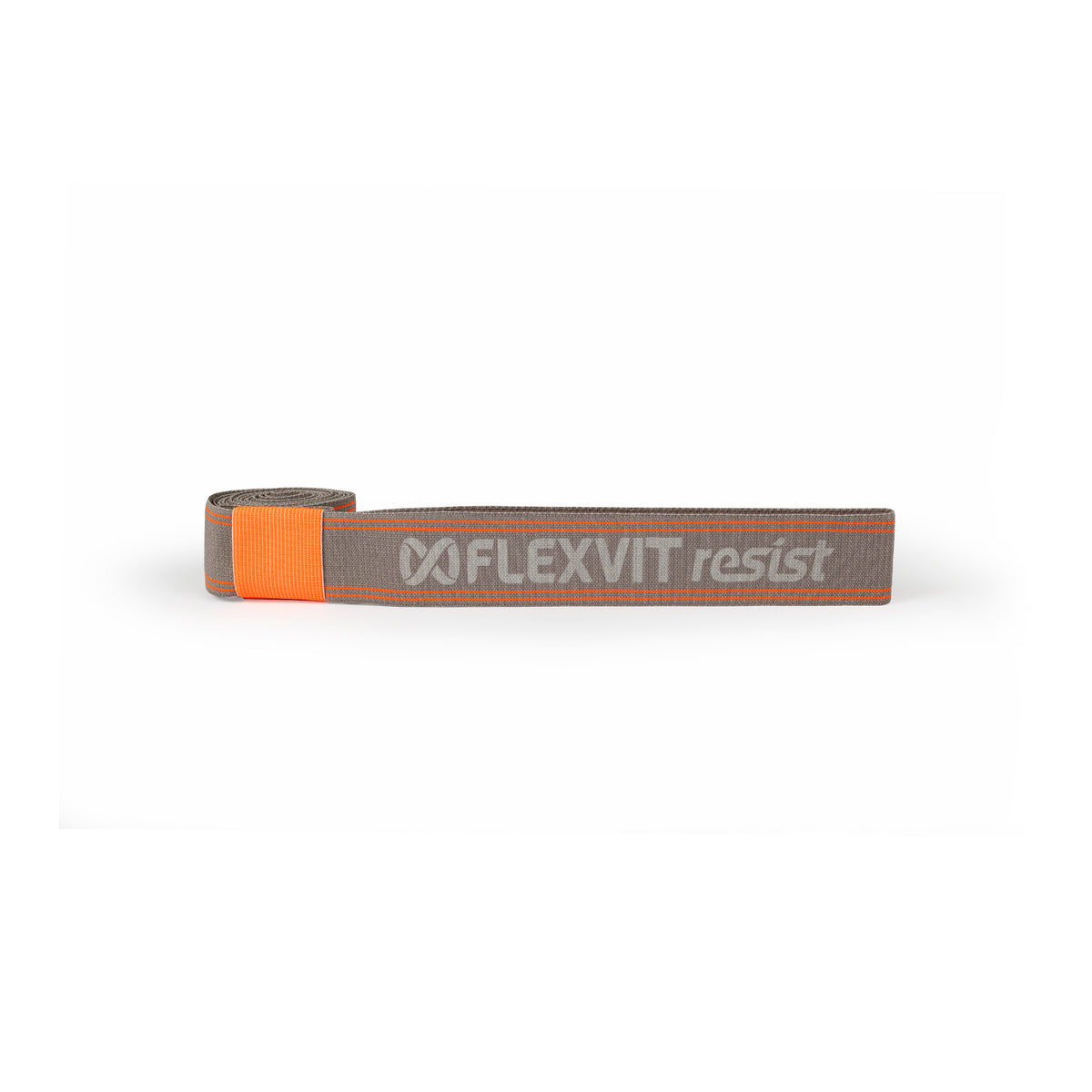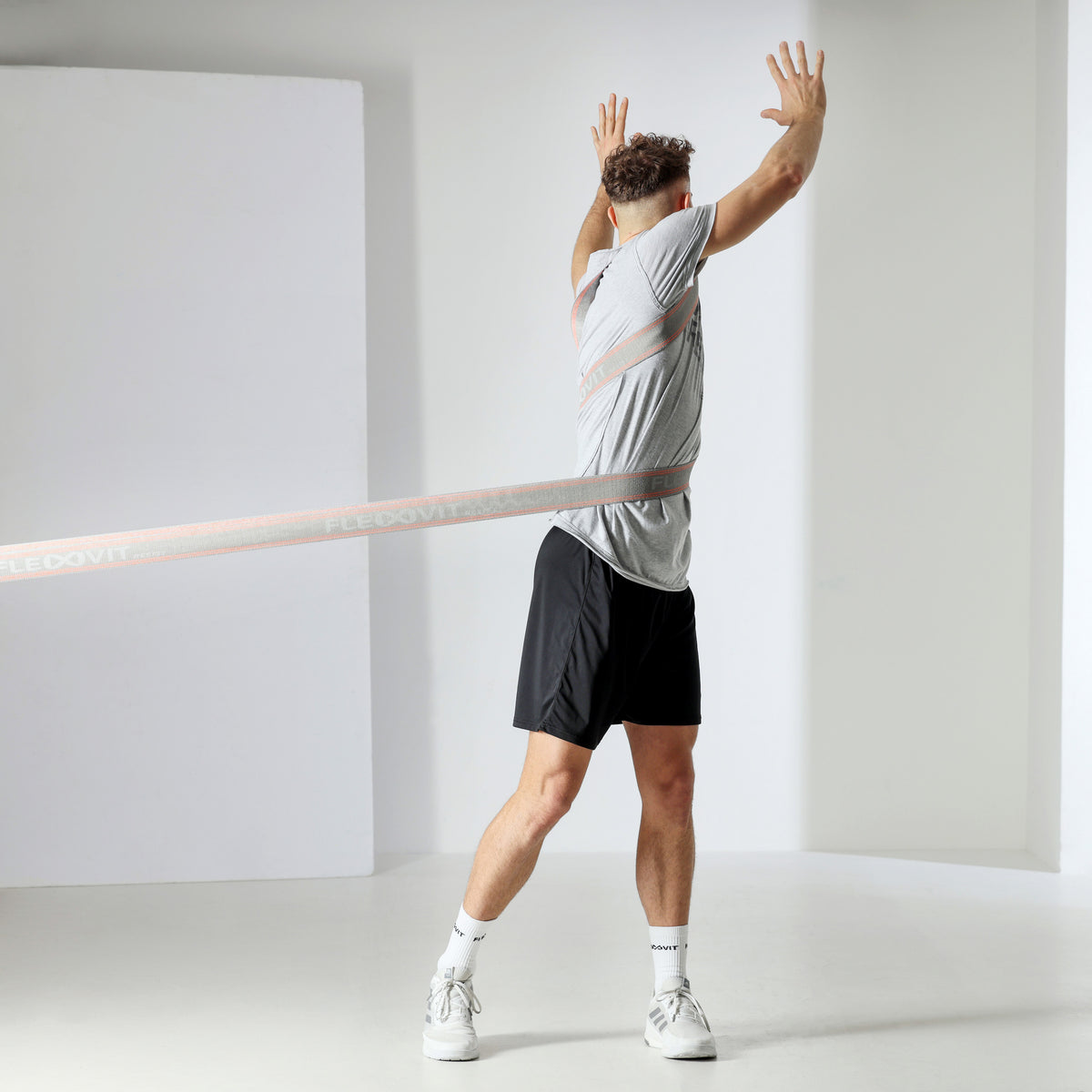We'll show you successful sprint training in football - with sports bands and FLEXVIT!
Football is one of the most popular sports in the world. Many people dream of running on the pitch as a professional even when they are still children. In Europe in particular, professional football provides some of the most important sporting media events
In addition to outstanding technique on the ball, both professional and amateur players need speed to get ahead of their opponents. Whoever gets to the ball first has a huge advantage. To excel in sprinting, you need strong, powerful hamstrings and powerful thigh and glute muscles.
Sprint training in football: What happens when you sprint?
Whether it's jumping ability, speed when sprinting or quick reactions when changing direction in a game: various factors and requirements of the body are involved in all of these skills.

Logically, in addition to the entire leg muscles, those muscle groups that control the movements of the thigh and torso play a crucial role. For example, the hip flexor is heavily involved in athletic movements such as sprints or jumps. In order to do this quickly and in a controlled manner, the hip flexors need strength and stability. In addition, the hamstrings, glutes and quadriceps are responsible for the speed in the legs.
The goal of sprint training is precisely to condition and train the fast-twitch muscle fibers - they are essential for your speed. Studies have shown that resistance training activates these specific muscle fibers and makes athletes faster and more powerful. With resistance bands from FLEXVIT, the overall strength, reaction time and speed of the legs can be effectively trained and improved through targeted resistance.
The right training bands for your successful sprint training in football!
Sprint training in football with resistance bands
Resistance bands are the ideal companion when it comes to sprint training in football: They are easy to transport, can be used anywhere and, above all, enable sport-specific speed training in dynamic game situations.
They are also used to increase the intensity of regular football sprint training that players already do and are familiar with. By using FLEXVIT bands, a sport-specific movement is converted into a resistance exercise. This is a huge advantage over isolated strength exercises, which of course also strengthen the muscles - but not specifically in football-specific movements.
Depending on the exercise and performance level of the respective athlete, different strengths of resistance bands can be used during sprint training in football. This means you can easily increase the intensity of your training, but also adjust it again and again. Stronger resistance brings more power and intensity to the workout, while lighter bands with more speed offer a different variation that also produces great results.

Sprint training in football: change of direction and reaction
Anyone who plays football knows that quick start and speed are rarely required on a long, straight route. In a dynamic sport, it's all about the seconds that give you the decisive advantage in sudden changes of direction. These movements require a stable core. This is because the core muscles need to be conditioned for the balance required during sudden changes of direction. Sprint training in football with resistance bands can be used to develop leg strength, which brings the necessary power and speed in precisely these unpredictable game situations.
Reaction sprint after agility training with a flat pass - football athletic training with FLEXVIT
In this training exercise, in addition to your basic speed, you also train your agility, explosiveness and, in particular, your cognitive skills.
Fix the FLEXVIT Resist to an external anchor or a teammate using the multi-anchor. For agility training, build a challenging shape out of cones or similar training equipment. In the video we have set up 5 fields in the shape of a plus sign. Important: This should be arranged in such a way that the player is not able to keep his head facing the line of sight. This causes him to lose sight of the 2 colored cones that are about 3 m away.
At the coach's command, the player then steps out of the exercise to the colored cone that the coach has named. The player then receives a flat pass on the outside of the cone, which he must play back cleanly.
The cognitive demand can easily be increased, for example by adapting the commands. When it comes to the strength of the legs, you can easily create variations by changing the shape and size of the hats. In addition, the resistance can be changed and adjusted by the distance between the player and the anchor point.
Sprint Training in Football: Fast Feet
With the FLEXVIT Mini you can easily train your acceleration and your leg strength in many different game situations. Especially in combination with a coordination ladder, you not only improve your cognition and leg muscles, but also your coordination. This can be an advantage if, for example, you want to dribble out an opponent and then sprint. Another example is when you, as a defender, stand up to your opponent, then win the ball and go into a counterattack. In these situations, leg coordination, quick feet with and without the ball and of course a powerful sprint are required.
Place the FLEXVIT Mini just above your knee and place a coordination ladder on the floor as usual. The additional resistance of the band activates your legs extra. This excess strength means you can then draw on greater strength resources in real game situations where you are of course not wearing a resistance band.

Carry out a combination of movements along the coordination ladder and then finish with a maximum sprint of around 10 to 15 meters. With an easy run or trot you will then get back to the beginning of your coordination ladder. Use this run to actively loosen your legs after a strenuous sprint. Once you reach the coordination ladder, you immediately start the next round of sprint training. Do about 10 to 15 repetitions of this until you give your legs a longer break.
Sprint training for footballers: optimizing game situations
A sprint is not always just with the ball at your feet and away from the opponent. It's often about who gets the ball first. Seconds often make the difference here and often, when you have the ball, you want to try to shoot or attack the goal straight away. For example, heading the ball requires very special skills, as it often involves a sprint followed by a jump.
Here too, the use of FLEXVIT tapes can create great effects in the game. To do this, use a multi-anchor and the FLEXVIT Resist. Fix the band to an external anchor point or have a teammate hold it. Your starting position should be such that the band already exerts a slight pull on your body. Now sprint forward powerfully for 3-4 steps and then jump off. At this point, another teammate should throw you a ball, which you then control and place and pass back to him or in another agreed direction.
This exercise trains explosiveness, fast sprints and jumping power. This exercise also helps you to have the necessary precision, despite fast movements, to get the ball exactly into the corner where you want it.
Sprint training in football: Our conclusion!
Sprints are an integral part of football and are extremely important for amateur and professional sports. Anyone who trains themselves or their team in such a way that the opponent only sees dust in a duel has an unmistakable advantage. In addition to classic sprint training, resistance bands from FLEXVIT offer an effective tool for training speed in specific game situations, regardless of location and for a specific sport.
To get your team up to speed, we at FLEXVIT have put together a special football set. The bands it contains can be used optimally to complement your sprint and speed training. Of course, there are many other ways to use the bands. Whether it's agility, strength or endurance - with the football set you can take your team's training to a new level.
When making our selection, we were guided by the user experiences of numerous athletic trainers. The different band types and strengths allow you great flexibility in choosing the optimal resistance for your players (in terms of intensity but also movement). With the special, high-quality material of the FLEXVIT bands made in Germany, your team will enjoy the pleasant feeling on their skin. No rolling up, no pulling on the skin and no sudden tearing like with conventional straps.
Discover more exercises for your athletic training in football – with our app!

